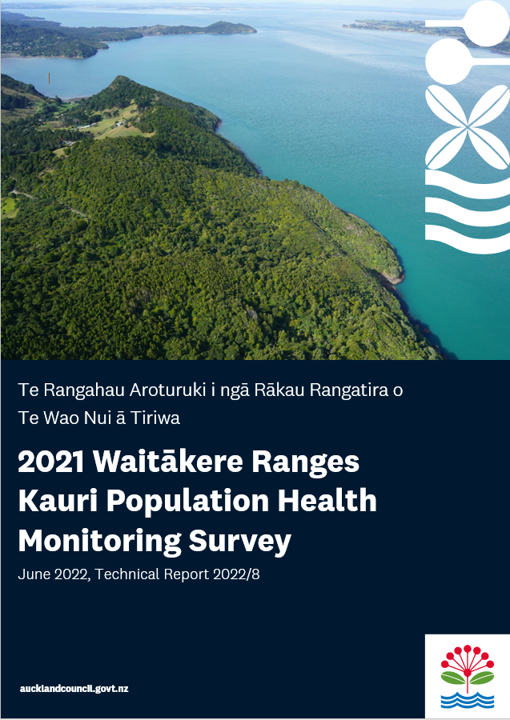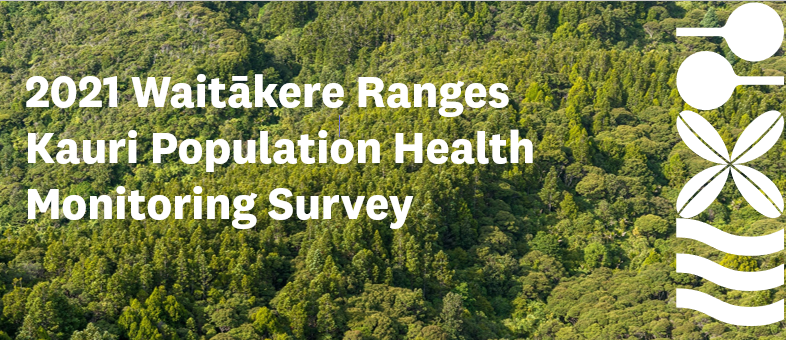2021 Waitākere Ranges kauri population health monitoring survey
Author:
Karyn Froud, Yue Chin Chew, John Kean, Jane Meiforth, Sarah Killick, Edward Ashby, Robin Taua-Gordon, Alastair Jamieson, Lisa TolichSource:
Auckland Council, Environmental ServicesPublication date:
2022Topics:
EnvironmentKauri dieback, plant pathogens
2021 Waitākere Ranges kauri population health monitoring survey / Te Rangahau Aroturuki i ngā Rākau Rangatira o Te Wao Nui ā Tiriwa

Phytophthora agathidicida, the causal agent of kauri (Agathis australis) dieback disease, is a threat to the health and long-term survival of kauri forests. In this report, we present a new long-term kauri health monitoring framework, developed using an epidemiological approach to investigate kauri health at the population level and help provide answers to a variety of management questions. We discuss the roll-out of the second tier of this comprehensive long-term monitoring framework in Te Wao Nui ā Tiriwa / the Waitākere Ranges. The survey, undertaken in 2021, was largely funded by the Auckland Council Natural Environment Targeted Rate (NETR) and has been co-designed and delivered in close partnership with Te Kawerau ā Maki following extensive input from New Zealand scientists and international experts.
The survey used a cross-sectional study design, which collects disease, pathogen and risk factor data at a single point in time to understand associations. Using new remote sensing techniques to understand the spatial distribution of the kauri population, a randomised sample of kauri was selected for field survey. Data were collected for three separate studies: a baseline prevalence study of P. agathidicida and symptomatic kauri, a risk factor study and a diagnostic test performance evaluation study. Key findings from all three studies are presented in the report.
This survey provides a consistent cohort of monitored kauri that can be measured repeatedly to understand change in disease and pathogen prevalence over time. Results will help inform the ongoing and adaptive management of kauri dieback across Tāmaki Makaurau / Auckland.
Auckland Council technical report, TR2022/8
Pdfs
8. Chapter 5: Key findings of the 2021 Waitākere Ranges survey
10. Appendix A: Monitoring form and detailed methods for study variables
12. Appendix C: Results of univariable screening tests from Chapter 3
13. Appendix D: Results of multivariable screening tests from Chapter 3
14. Appendix E: OpenBUGS code for the BLCA model from Chapter 4
15. Appendix F: Supplementary information from Chapter 4
16. Appendix G: Supplementary information risk maps from GIS derived variables
30 June 2022
